Thank you, Donald. You reminded me how my grandmother escaped TO Alcatraz - and was welcomed in America.
Plus, you've helped to highlight the fact that other groups, paricularly Asians, were treated terribly at that immigration gateway. But even Alcatraz offered promise and hope for some.
On Sunday, President Trump announced that he’s directed government agencies to restore and reopen Alcatraz, perhaps the most infamous and feared jail in American history. As with so many of Trump’s “ideas,” it was probably inspired by something he saw on TV, and it’s said that the movie Escape from Alcatraz was being shown on south Florida cable last weekend. His goal, so predictably, is to inspire fear in the hearts of those who might dare to come into this country, and anger and agita among libs who, in his mind, are so easily triggered by every dumb ass quip he makes.
What was triggered in me was a very warm and fitting memory. I immediately thought of my grandmother, Dora Weinstein Rouffe, a Jewish refugee who came over to America from Smorgon, Belarus by way of - you guessed it - Alcatraz.
On the eve of World War I, Smorgon was a thriving Jewish community, with seven synagogues, three elementary religious schools, and a Jewish hospital. According to the Encyclopedia Judaica, during the early stages of that war, many Jews in Smorgon were sent to the Russian interior. Among them was my grandmother.
With the Western front and the Russian Revolution coming close to her doorstep, she and her siblings escaped eastward, all the way through Siberia, to Vladivostok, on the Pacific coast. With relatives already in America, including her father, Bubbe Dora, still just a teenager, journeyed to America on the most circuitous path possible, a route that took her to Harbin, China, where the Jewish community was thriving at that time, teeming with refugees from Europe; then across the Pacific to Hawaii, then to San Francisco and finally across the U.S. by train to Boston. That’s a distance of 11,151 miles, as the (very tired) crow flies. But for those 11,151 miles traversed in wartime by an industrious, courageous teenager who fortunately spoke a half dozen languages, I would not be here.
Before being admitted to the U.S. mainland, she spent several weeks at what was to become an infamous penitentiary for bank robbers and murderers, but during World War One was a military fort repurposed to house conscientious objectors, along with, possibly, some refugees awaiting permission to land in the U.S. That’s Alcatraz, the place where Trump must think Hannibal Lecter is cooking up some fava beans. (Or maybe it’s scary for him because it’s just a few miles, as the crow flies, from Nancy Pelosi’s house. And we know how she triggers him!)
But it’s possible that my grandmother’s memory was fuzzy and that she was really talking about Angel Island, adjacent to Alcatraz on the Marin County side of the bay, where refugees were indeed processed. It’s easy to see how the two could have been conflated.
Angel Island’s commemorative website states:
Between the end of the 19th century and the beginning of the 20th century, millions of people — in numbers which have not been seen since — came to America in pursuit of a better, freer life. On the East Coast, most of the huddled masses were met by the Statue of Liberty and Ellis Island. On the west coast, between 1910 and 1940, most were met by the wooden buildings of Angel Island.
Angel Island processed immigrants, but unlike its East Coast counterpart, when it was constructed in 1910, its initial purpose was to keep certain ethnicities out. The Chinese Exclusion Act of 1882 was the first time in U.S. history that a specific group was barred from immigrating here, and other restrictive acts followed,1 with a particular bias against Asians.
That did not deter my grandmother, if she even knew about the restrictions, which she invariably did, having spent a good amount of time in Harbin, China.
A National Archives study states:
Between 1915 and 1919, Russian Jewish men, escaping conscription or deserting the army, and later mothers, children, and other relatives of American residents, constituted a large share of the non–Asians arriving at Angel Island.
Why did they dare to take such a treacherous trip? An unpublished Yiddish memoirist, quoted in Irving Howe’s World of Our Fathers, writes, “They pushed me into America,” - they being the forces of oppression he encountered in his youth. Or, as another unpublished writer recalled, “A powerful storm-wind ripped us out of our place and carried us to America.”
The storms of Europe carried two million Jews across oceans to American shores between 1881 and 1920. My grandmother came at the very end of that wave and she considered herself incredibly fortunate to have somehow made it here during a world war. She had no idea how fortunate she was not to have stayed in Europe. Her Jewish community was completely wiped out two decades later during the Holocaust, while she ended up on an island in San Francisco Bay - and they let her in.
Angel Island - or what she called Alcatraz - was hardly a welcoming waystation. Europeans like my grandmother had it easier, but it was still prison. She was separated from her brothers and unable to receive mail from her father awaiting her in Boston. The food - heavy on pork chops - was forbidden to her and she didn’t want to eat it. They were locked up, though able at times to step outside for some fresh air.
The waiting, after so many months in transit, was as excruciating as the uncertainty.
Listen to Dora recall this part of her journey when I interviewed her in the mid-1970s, about a decade before her death (apologies for the quality of the recording on my nifty vintage 1975 hand-held cassette player).
To listen to my full interview with my grandmother click on the footnote 2
Search immigrant stories at the Angel Island Immigrant Voices site.
You can still read the manifests from ship arrivals at Ellis Island and elsewhere on this site coordinated by the National Parks Service (Shhh). Including slave ships.
You can hear that, in her mind, it was definitely Alcatraz. And who am I to dispute that? Alcatraz was used to imprison radicals and maybe Russian Jews were suspected of having “radical ideas.” Like Trotsky. Or Karl Marx himself. Or Emma Goldman, who was imprisoned at Ellis Island. The original Red Scare was already stirring up a wave of antisemitism.
But whether Bubbe really stayed in Alcatraz or its neighbor to the north, once she got her papers and headed on the train to Boston, Dora felt embraced by this country.
For her, Alcatraz was always her gateway by the Golden Gate, her chance for a new life far from Cossacks and Bolsheviks. She was finally able to keep the Czar far away from her. For my grandmother, it was an escape to Alcatraz, not from it.
And that’s what we need to keep saying to all those who just want to build more and scarier prisons for refugees.
Even Alcatraz offered promise and hope for some.
Thank you, Donald, for reminding us that, according to the UN Relief Agency, more than 120 million individuals have been forcibly displaced worldwide as a result of persecution, conflict, violence or human rights violations. We are now witnessing the highest levels of displacement on record.
And thank you for reminding us, in bringing up that hellhole by the bay, that for so many Americans of all different backgrounds whose ancestors passed through it or places like it, my grandmother’s story is the quintessential American tale.
And so is its opposite, which is the story of Angel Island and the Chinese Exclusion Act.
America either welcomes or it excludes. Through history it has done both. I pray that the pendulum swings again, in the direction that will allow the next Bubbe Dora and her future offspring to survive and thrive. And may our remembering the good and the bad of Angel Island, summon to the fore our own Better Angels.
Watch this video about Angel Island and contrast the treatments of Asians here with how Europeans were treated at Ellis Island.
Dora Rouffe Interview (parts 1,2,3,and 4 in order)

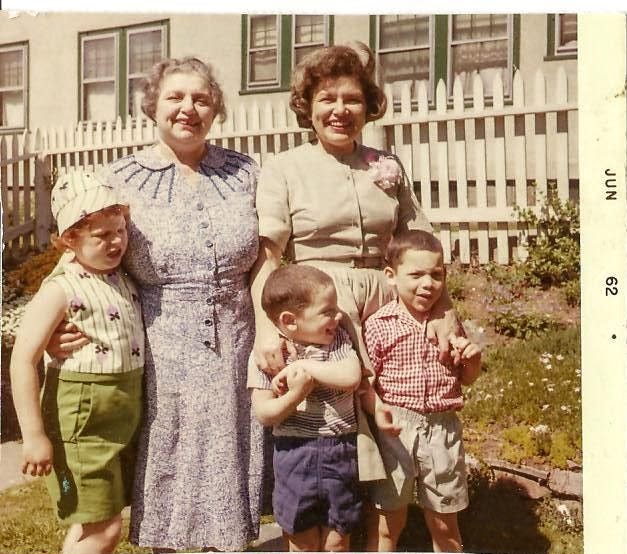
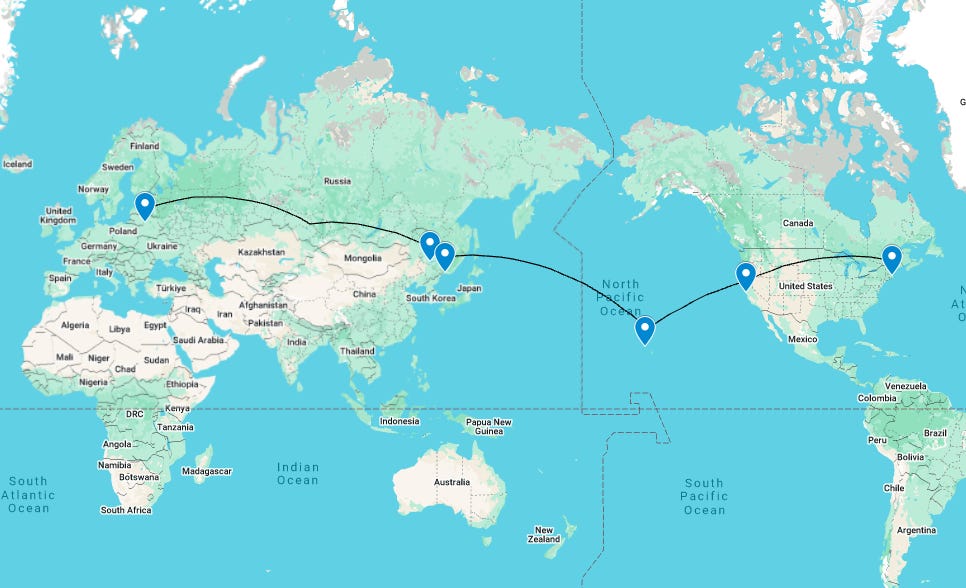
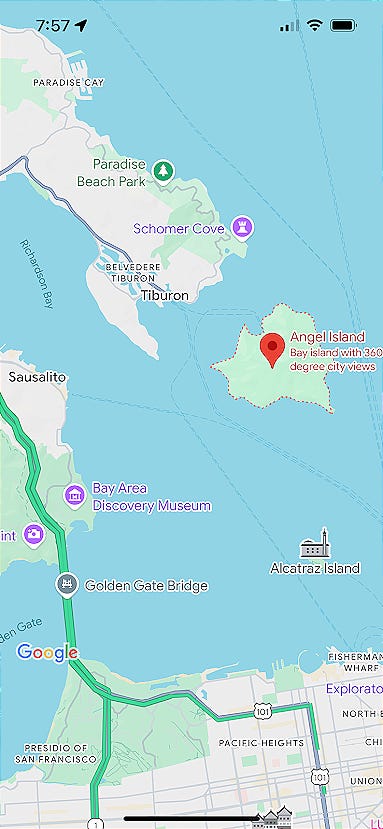
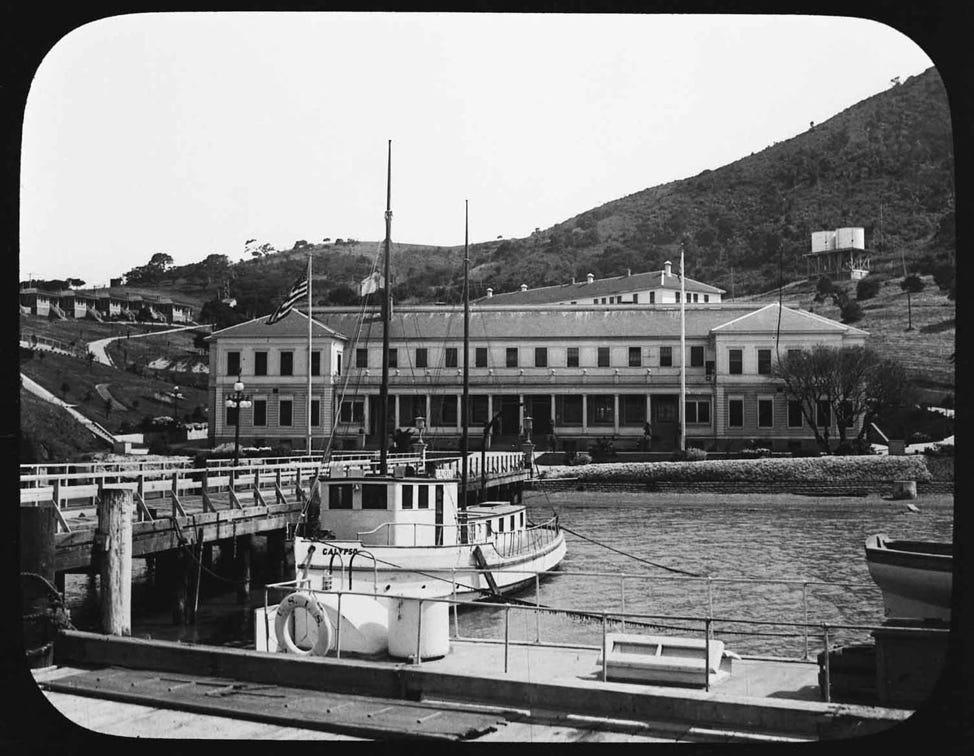
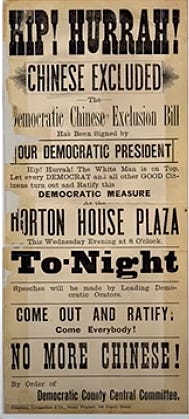
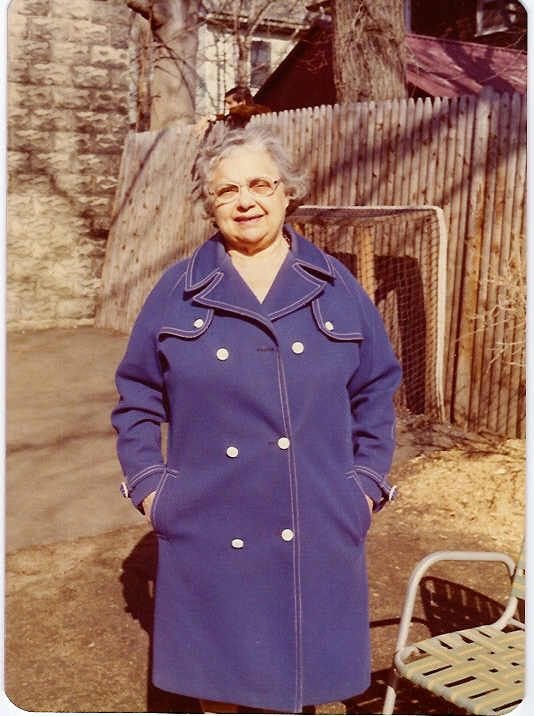





What a story! Thank you so much, Rabbi Hammerman, for sharing your courageous grandmother with us. Sheesh. What stamina, hope and resilience one needed to survive such a trip. How pampered we are all today, hearing about what your grandmother went through. Thank you too for the interview, even though hard to understand, and the informative videos.
Listing past "Notebook entries" for those who missed them is a great idea. Great work. Best wishes as always.
Your little brother Mark looks like a rounder. I have so many Kodacolor snapshots from that period. My two sets of ancestors came through Ellis Island, your grandma traveled over 11,000 miles as a teenager is amazing. Ours were the lucky ones. Mine came from Russia/Poland and Hungry/Austria. Everyone spoke many languages but mostly Yiddish. This story of yours is great. Your stories are all great. Keep getting “weller” and keep writing. You are a treasure. Yours, Claudia.